We've created a series of posts that discuss how we went about gathering the stories that will shape Sacred Places. This exclusive behind-the-scenes look at covers these topics:
1. The Challenge of Addressing Religion in an Exhibit Like Sacred Places
2. Using Artifacts to Tell Personal Stories
3. Stories Begin with Relationships
4. Weaving It All Together
One of the desired outcomes of an exhibit like Sacred Places is to encourage children and their families to have a healthy, respectful, and inclusive view of people’s religious and spiritual rituals and practices. As discussed in our post about our use of artifact stories in the exhibit, our exhibit team, with the guidance of a team of academic and religious advisors, agreed that the most effective way to foster this perspective is by telling personal stories of real people in those faith communities.
With this in mind, our Sacred Places exhibit team got to work. The exhibit features six immersive environments that take you on a deeper dive into people’s religious experiences around the world. The team was looking for young religious practitioners to serve as guides for each of these places. The goal was that through hearing their stories, you’d get to know the guides, learn what they do in their sacred place, and discover how their sacred place makes them feel. As you hear from these guides and members of their communities, you will discover how your experiences in your own sacred places compare and contrast with theirs.
Planting seeds of relationships
Finding people willing to share their story, especially with a topic as personal as religion, can be a challenge. It requires a trusting relationship between the museum, the religious communities, and the guides themselves. Fortunately, through our exhibit team’s research and planning process, we came in contact with CyArk.
CyArk is a nonprofit organization that has spent the last 20 years creating equitable access to cultural heritage through digital experiences.They have pioneered the application of 3D recording technologies to the preservation and celebration of cultural heritage and have worked with local partners at over 200 sites in more than 40 countries. Because of their longstanding relationships in communities around the world, their relationship roots run deep.
CyArk helped plant the seeds of relationship in many of the sites we highlight in the immersive experiences. They introduced us to the communities. They facilitated conversations between our team and the communities. Some of the relationships between our team and the religious communities took a year to grow and take root.
Through our collaboration with CyArk, we were able to ask the different communities for their input. Did they have a young person who is active in their community’s religious life who would like to talk with us about their experience? Every community had someone in mind. That’s how we found our way to our exhibit guides.
The relationships that grew thanks to CyArk’s influence here were vital to the development of this exhibit. Our exhibit development team asked our guides to do a vulnerable thing—share practices that are highly personal, and sometimes very private. They also asked our guides how they personally interact with their community as well as their religion. In order to have these deep and personal conversations, you have to build trust and you have to work on that relationship in order to build that trust.
Meeting face-to-face
After many months of meeting online with the guides and other members of their religious communities, it was time for members of our team to visit the communities and encounter their sacred places in person. During these visits, our team was able to interview more than 20 different people around the globe. Their stories and insights are included in the Sacred Places exhibit.
“As we were interviewing people all over the world, it was beautiful to see that all over the world, there were kindhearted, brave, open people who valued education and communicating about their lives. It was a very heartwarming experience. People are just people, even if they live vastly different lives than you.”
Melissa Pederson
Exhibit Developer
We are excited to introduce you to the guides who have become friends throughout this process. Meet The guides who share their sacred places in the exhibit:
Shivesh and Patan Durbar Square
Lalitpur, Nepal
Patan Durbar Square is home to many temples and shrines, each of which is dedicated to a Hindu god. Click here to take a digital tour of Patan Durbar Square.
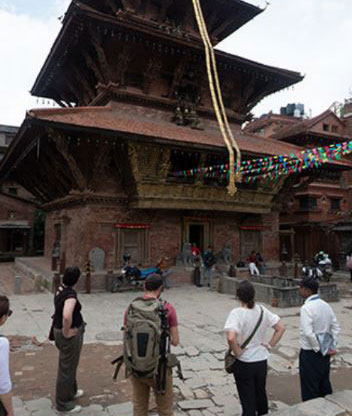
Meet Shivesh Sharma! Every day, Shivesh performs a puja, or act of worship, to the god Keshav Narayan. Shivesh wakes up the god and makes offerings while reciting phrases from sacred Hindu texts. Doing this allows Shivesh to feel Keshav Narayan’s presence.

“This was the first excursion out to meet and get to know the community at Patan Durbar Square, and I was so nervous to get it right. I shouldn’t have been—Shivesh, our museum contact Sunil, and the community as a whole were so warm and willing to share their experience of life in Nepal.“
Melissa Pederson
Exhibit Developer
Shivesh went shopping with our exhibit development team and helped them pick things out for the Sacred Places exhibit. They told him about the team’s plan to display some Hindu deity figures in the exhibit. He helped the team make their decisions, focusing on the figures he thought best represented Patan Durbar Square.
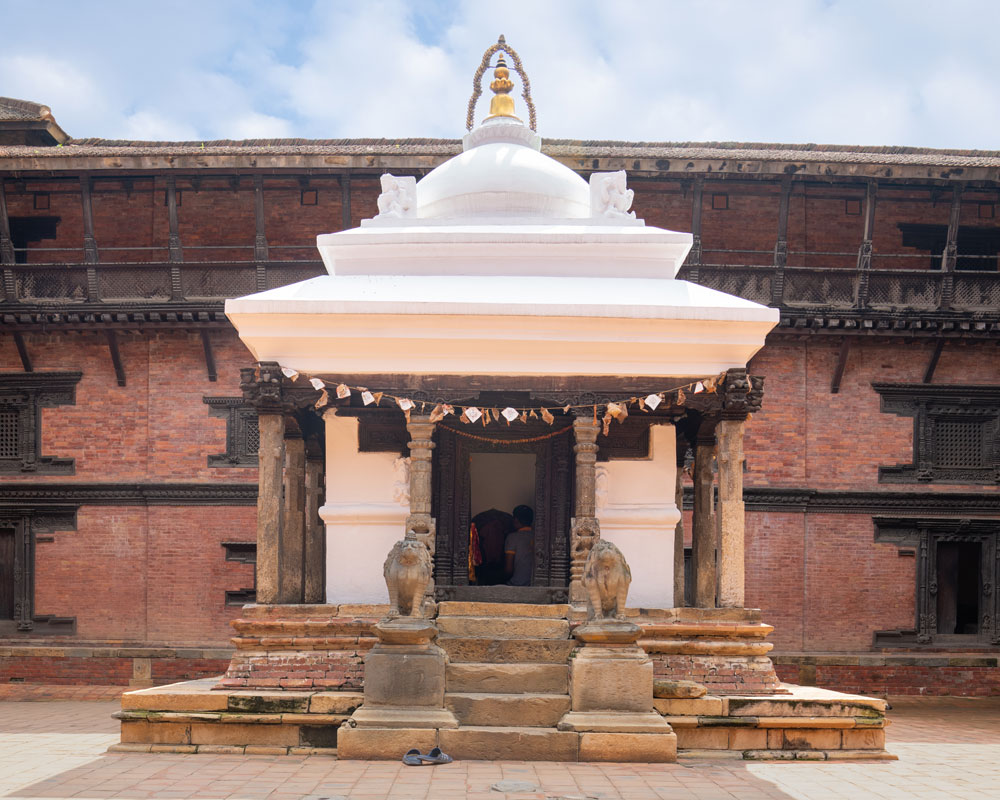
Other artifacts on display from the faith community at Patan Durbar Square include a puja offering tray—a brass tray like the one Shivesh uses to hold offerings for the gods. There is also an intricate traditional woodcarving that’s similar to the carvings that were created to help restore the temples in Patan Durbar Square after a devastating earthquake.
Nathan and Mikvé Israel-Emanuel Synagogue
Willemstad, Curaçao
Mikvé Israel-Emanuel Synagogue is the oldest continually used synagogue in the Americas, a place where the Jewish community in Willemstad has gathered for nearly 300 years. You can take a digital tour of Mikvé Israel-Emanuel Synagogue here.

Meet Nathan Levy Maduro! Nathan is a layperson who occasionally leads prayers and songs in morning Shabbat services. Nathan learned the prayers from his father and grandfather, and feels proud and thankful that he’s able to carry on the tradition.
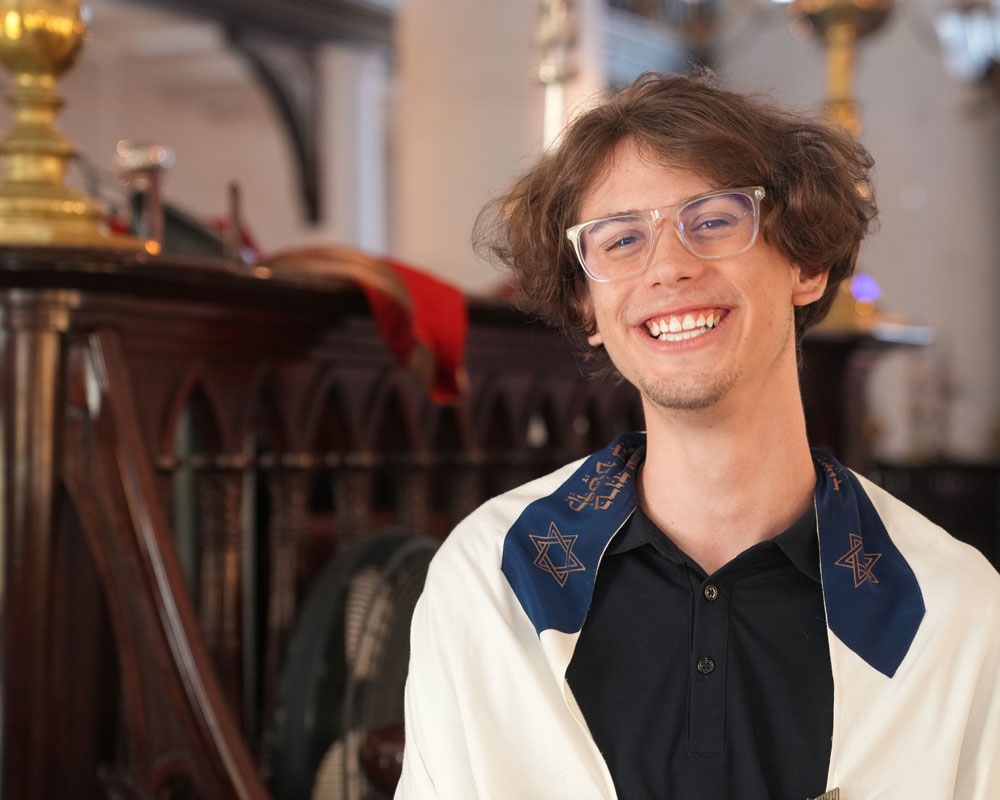
The community was very kind to our exhibit team.They welcomed the team to sit with the congregation and observe Shabbat services. Everyone agreed that our team would not take photos or videos during the sacred service. The congregation suggested they return to the synagogue the next day to recreate some moments from the service so our exhibit team could gather the video and photo resources they wanted for the exhibit. They were incredibly generous towards our exhibit team,
“I was so moved by the very strong connections that the community had to one another, but also the generations before. A particular song during the Shabbat service that spoke to this, ‘generation to generation,’ and the warm breeze, the smell of the old wood and hum of fans immediately transported me to summers spent in fellowship in my family’s place of worship, and I felt an incredible sense of the human connection with one another through traditions familiar and new.”
Monica Ramsey
Vice President of Experience Development and Family Learning
During Shabbat morning service, all men and some women wear a kippah—a head covering worn during prayer to show honor and respect to God. Nathan’s kippah, along with a prayer book and a Torah service booklet are on display in the exhibit.

The Torah contains stories, law, and wisdom of the Jewish faith. Torah scrolls are treated reverently. The Torah on display is damaged and tradition states that it should be retired and buried. Because of the trust-based relationship that has sprouted with the Mikvé Israel-Emanuel Synagogue, the faith community agreed to an exemption and has graciously loaned a Torah to be displayed in Sacred Places.
Other objects on display from Mikvé Israel-Emanuel Synagogue include a Torah cover and rimonim—also called Torah finals—that were used to adorn a Torah scroll, a cup and challah bread cover used during kiddush blessings, a shofar that was used by members of the Mikvé Israel-Emanuel community during the High Holy Days of Rosh Hashanah and Yom Kippur, glass window fragments and a section from one of the building's beams, and sand from the synogogue's floor.
Jude and the Church of the Beheading of St. John the Baptist
Madaba, Jordan
In an example of allowing the local community to guide our exhibit, our team initially planned on featuring St George’s Greek Orthodox Church in Madaba. It is home to the oldest-known mosaic map of Jerusalem. The map was built into the floor of the church building around 550 CE and was used by pilgrims on their way to the Holy Land. Because roads through Madaba connected to other empires and kingdoms, Madaba is often credited with the spread of early Christianity. It’s both a historically and culturally significant sacred place. You can take a digital tour of St. George’s Greek Orthodox Church here.
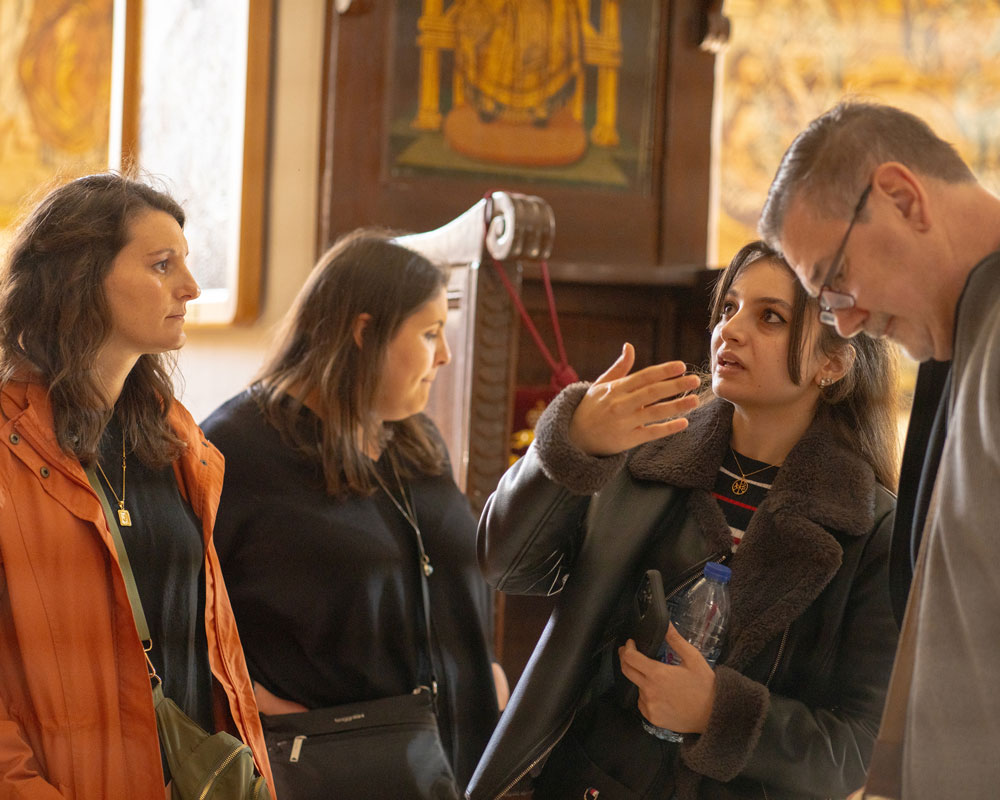
As our team’s relationship with the religious community in Madaba began, they met Jude. She agreed to serve as our exhibit’s guide to the practice of Christianity in Madaba, Jordan. Jude’s church—the Church of the Beheading of St. John the Baptist—was built atop ruins of ancient Christian places of worship in Madaba. It is near St. George Greek Orthodox Church. Without taking the opportunity to meet and get to know people in Madaba, the Sacred Places exhibit would have been vastly different.
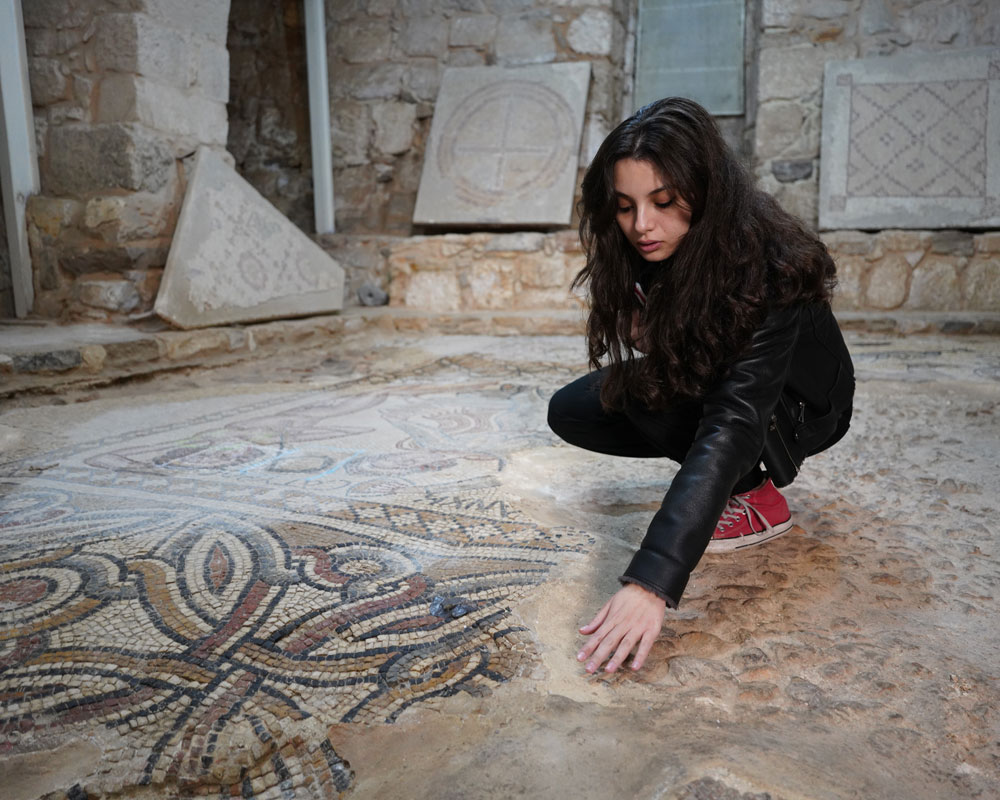
Jude says that being a Christian in Madaba is unique because you’re just a 30–40-minute car drive to almost anywhere mentioned in the Bible. “It makes it so much more relatable to actually see the place where the people used to worship, or see the places that are actually mentioned in the Bible,” she says. Madaba is often credited with the spread of early Christianity.
“At first I was struck by how familiar the Christian churches felt, with such a recognizable service—even though I don’t know the language.. It feels like there is an extra layer connecting Christians in Madaba to their faith. The people conveyed stories in the Bible as tangible history, since the places in the text are at arm’s reach.”
Natalie Lyon
Interactive Technology Manager
Our exhibit team visited Madaba right before Christmas. They were able to attend the school’s children’s choir performance at Jude’s church. As they experienced the performance, they saw first-hand that some religious celebrations are universal—especially when children are involved. All of the parents were recording with their phones. Not all of the children knew all of the music, but they all knew the choruses pretty well. Some children weren’t paying attention. Older children were standing in the back, leading the younger children. They were singing Christmas carols that are well-known in the United States. They were singing them in Arabic. “On the one hand,” Director of Collections Chris Carron reflected, “ it’s a totally different experience. On the other hand, it’s totally universal. It’s really fun to see.”
You can see a video from the children’s performance inside the exhibit.

The Church of the Beheading of St. John the Baptist community gave the museum a liturgy book as a gift for Sacred Places. Jude reads prayers from this book during Mass. A replica of a beautiful Chi Rho necklace Jude’s mother designed is also on display in the exhibit.
Aïssata and the Great Mosque of Djenné
Djenne, Mali
The Great Mosque of Djenné is an Islamic place of worship, located in Mali in West Africa. It is also the largest mud structure on the planet. You can take a digital tour of the Great Mosque of Djenné here.
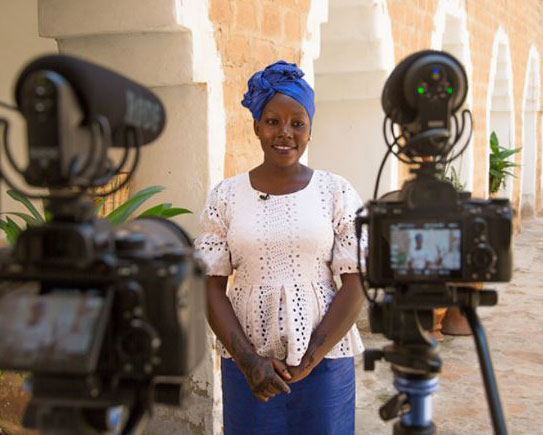
Every year, the mosque's walls need to be replastered to protect the structure from heavy rains. This replastering, or Crépissage, is a community effort full of celebration and friendly competition. Often people members of the community who have moved away return just to participate in the replastering. In addition to the vital repair work, the multi-day event includes a community feasting and celebrations with music for young people.
Whether you are a youth or an elder– everyone has a vital role in the replastering. Children help transport the plaster from the river, young people help make food, make music, and prepare and apply the plaster, and elders support with prayers and guidance.
Meet Aïssata Guitteye! Aïssata supervises the girls in her neighborhood as they gather water to keep the mud moist during the replastering.
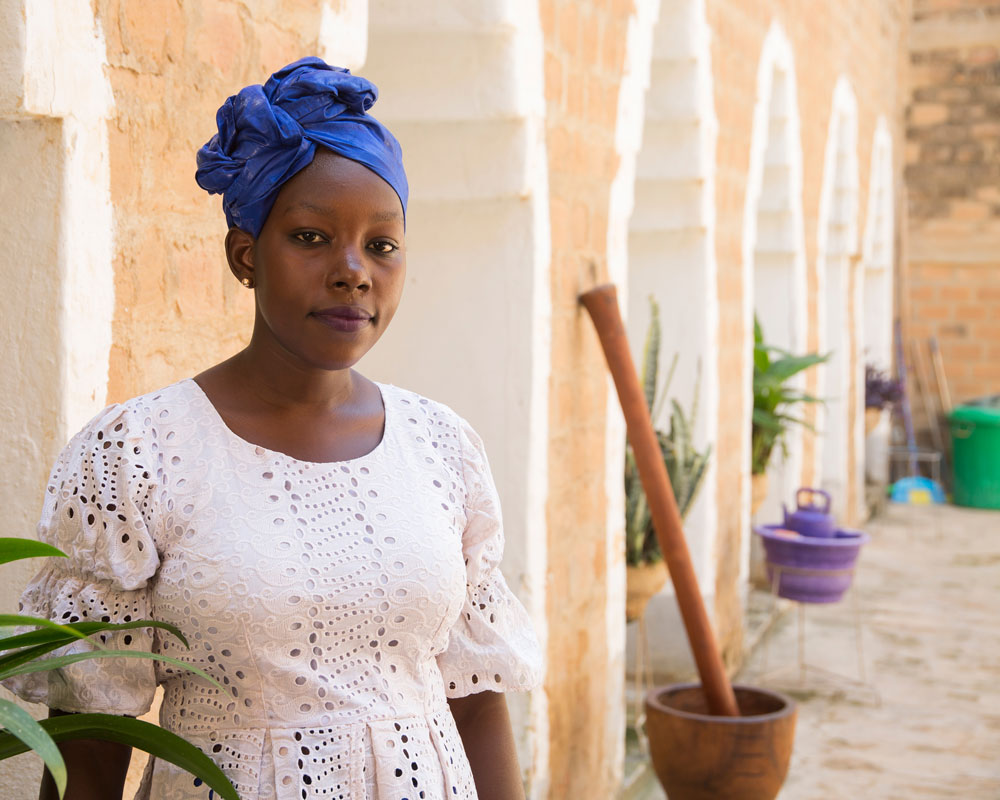
Our exhibit development team was unable to travel to Mali for this exhibit. However,thanks to the relationships that had already been fostered through CyArk, we were able to conduct in-person interviews through people who were already closely connected with the local community. Our team was able to ask members of the Djenné community the same questions that were asked during each of the in-person meetings.
“Re-mudding the mosque is a big community event, but it’s also a sacred event for these thousands of kids from all the neighborhoods to come with their baskets and grab mud at the lake and bring it up to the masons to re-mud the mosque.”
Chris Carron
Director of Collections

In addition to a banco basket that has been used to carry the mud during the re-mudding process, we also have a calabash instrument on display. Aïssata and other neighborhood girls sing and play instruments like this while the neighborhood boys use banco baskets to carry mud to the mosque for the workers to add a new layer to the walls.
Merahi and Rapa Nui spirituality
Rapa Nui
On Rapa Nui, also known as Easter Island, giant stone statues called moai represent residents’ ancestors. And like all things and all people, the moai contain mana, or spiritual energy. It’s vital to those who practice Rapa Nui spirituality. Take a digital tour of the island of Rapa Nui here.
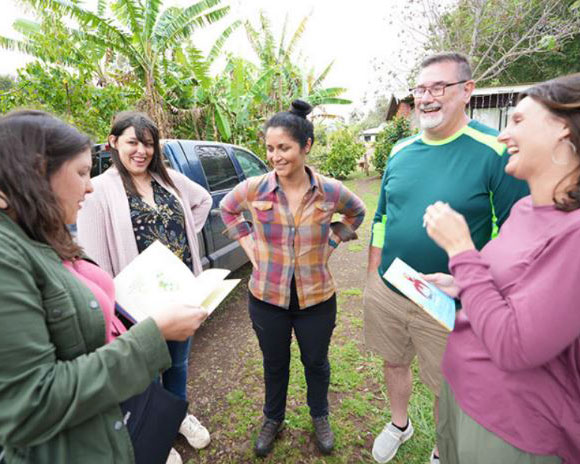
“Rapa Nui is unlike any other place I have ever been. The vibrant energy of Rapa Nui is seen in a beautiful community of people who are deeply connected to the island and their ancestors before them. I could hear echoes of my own faith as they talked about their way of life, traditions and beliefs.”
Jessica SImmons
Senior Exhibit Designer
Meet Merahi Atam! Merahi is an archaeologist who loves and respects her home and uses her knowledge to protect and conserve that energy, an essential part of island heritage.

During the team’s time in Rapa Nui, the story continued to evolve as they met more members of the community. They met a woodworker who carves legendary wooden figures called moai kavakava. As the Rapa Nui community believes that mana energy flows through all things on the island, they agreed to allow us to display one of the wooden figures along with the tools used to create them in the exhibit.
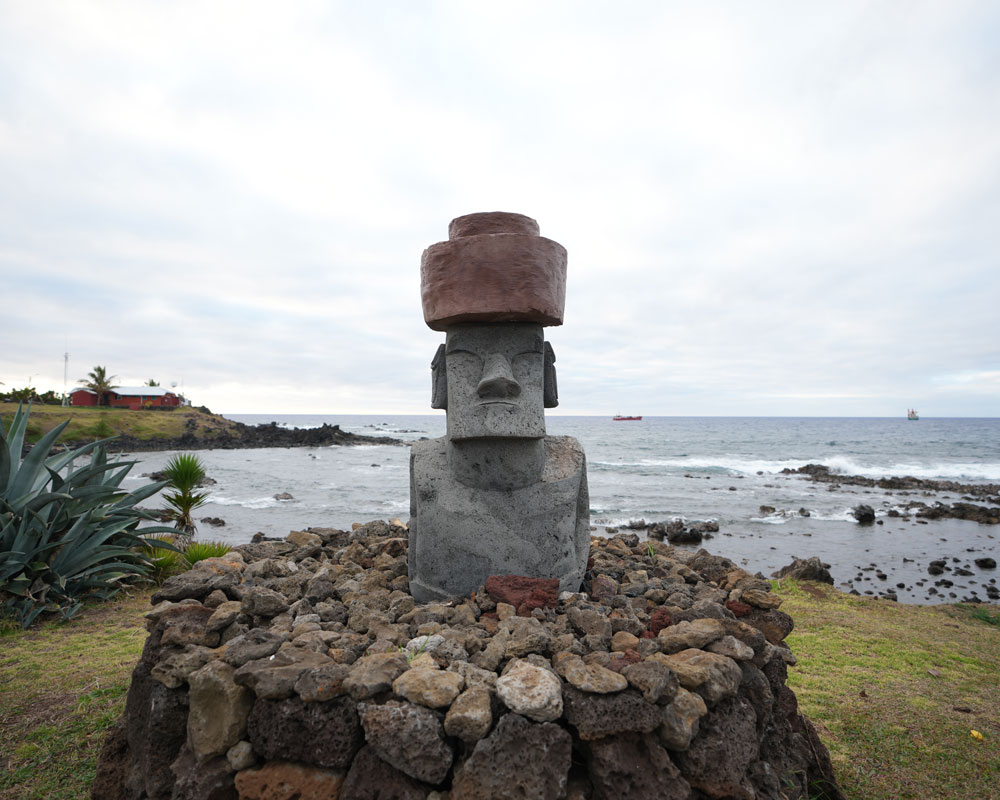
Many people recognize the giant stone moai statues on the island of Rapa Nui. Stone artisans have been carving these statues for centuries. A moai statue on display in the exhibit was carved by a modern-day Rapa Nui artisan. He used modern tools and ancient techniques that he learned from his father and grandfather. Our team has gone to great lengths to display the moai statue in a manner that is respectful and appropriate for a museum exhibit.
The artisan explained that the stone moai are created with eyes made out of coral. Adding the eyes to the statue is what draws the spirit into the moai. He explained that it is appropriate for him to make eyes for the museum’s moai, but it should be displayed without the eyes attached. In Sacred Places, you’ll find the moai statue that the artisan created. Their eyes are displayed next to it—just as the artisan explained how it should be displayed.
That’s a key strength of creating an exhibit based on trusting relationships. Our team was able to learn from somebody who’s part of a tradition and could discuss how we should use the artifact, how it could be displayed, how it should not be displayed, and other details about the tradition that you wouldn’t learn without having those real conversations. In the process, we’re able to share the personal story of an everyday person practicing their faith.
Kaew and Wat Arun
Bangkok, Thailand
For about 400 years, Buddhist followers have gathered at the temple Wat Arun to show respect to Buddha. Kaew, a monk in training, is among them. Every morning, he collects food offerings from community members (monks cannot make their own food or buy their own robes), and joins monks for daily chants. These chants, Kaew says, keep his heart calm and allow him to reflect on Buddha and his teachings. Click here for a digital tour of Wat Arun.
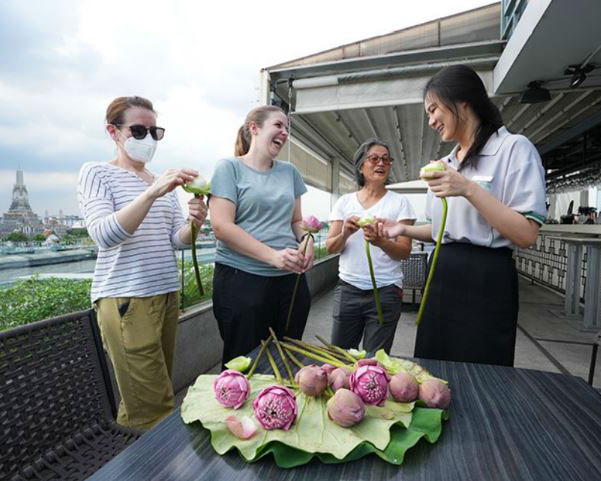
“It was a truly beautiful and peaceful experience to listen to the monks chanting each morning, but that was far surpassed by the kindness and welcoming spirit of each person we met. The monks were extremely generous with their time and patiently answered all our questions. My heart was full after visiting Wat Arun.“
Andrea Hughes
Lead Curator, Arts and Humanities
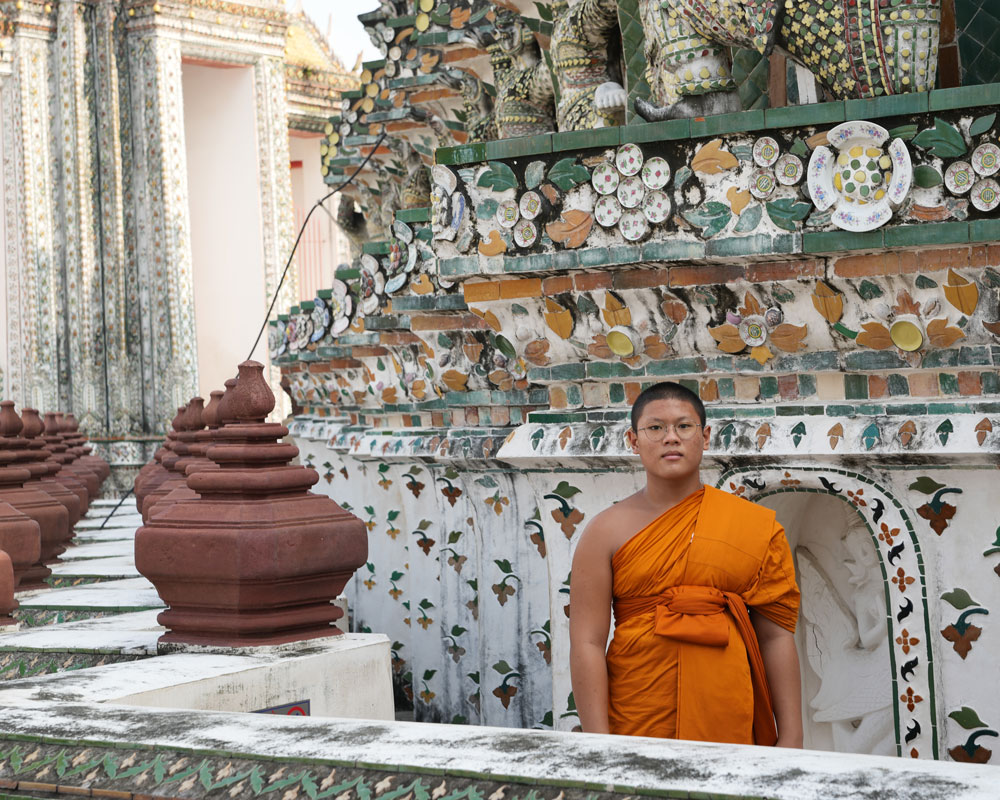
The monks who met our exhibit development team gave the museum some items for Sacred Places. They might be seen as everyday items, but they are precious to the exhibit’s curators because of the deep personal connection with the Wat Arun community.
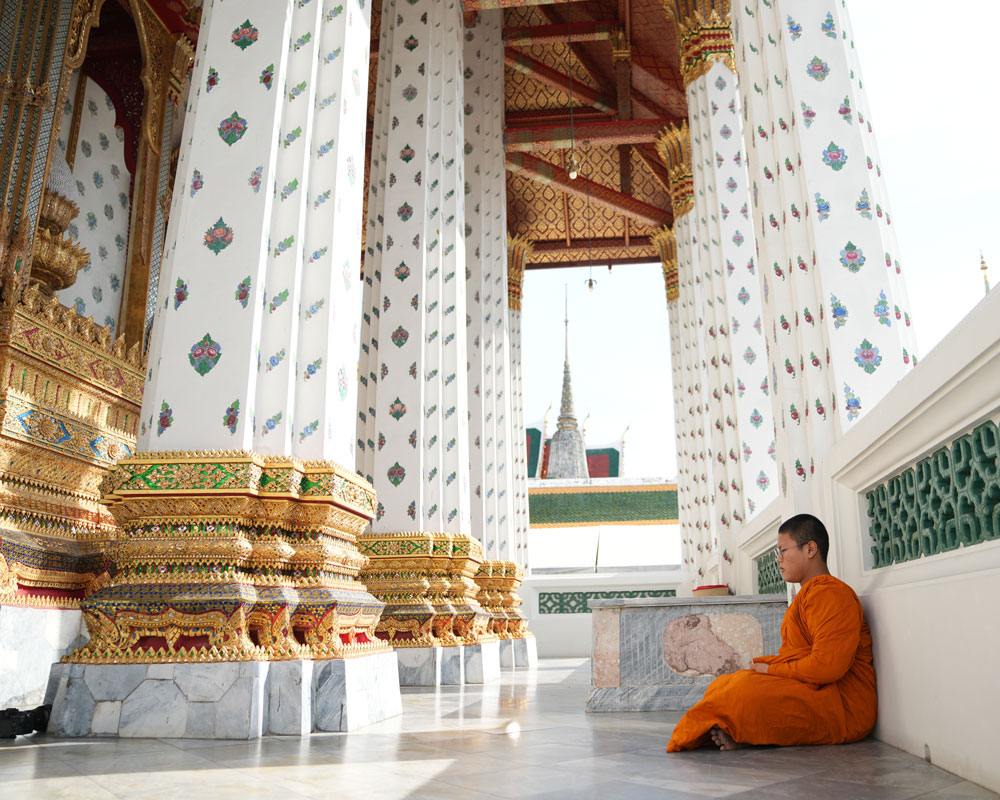
Artifacts on display from the monks of Wat Arun include an image of the Buddha Calling the Earth to Witness, a prayer book containing Buddhist monk chants, two masks that represent the guardians of Wat Arun, examples of offerings left there, and a batr that Kaew used to collect food from the surrounding Buddhist community. There are also several items that feature the lotus flower—a symbol of how people have the ability to overcome challenges and achieve purity and goodness. Lotus flowers are often given to Buddha as an offering.
Bearing beautiful fruit
With the guidance of a team of religious and academic advisors, our exhibit development team sought to create a space where you can discover a common thread shared by people around the world. They agreed that the best way to do that is through long-lasting relationships. That means elevating people’s stories instead of creating our own. It means listening to people’s perspectives and experiences instead of dictating our own preferences. In many ways, it means getting out of the way and letting the communities of faith—the real experts—speak.
This can only happen because of the relationships that were cultivated and continue to be nurtured around the world. CyArk helped plant the seeds. Our exhibit development team helped the roots grow deep. The real fruit, however, is in the conversations that will happen when people visit Sacred Places, hear the real stories of people around the world, and start telling their own stories.
Sacred Places was made possible by Lilly Endowment, Inc.
Lilly Endowment Inc. is a private philanthropic foundation created in 1937 by J.K. Lilly Sr. and his sons Eli and J.K. Jr. through gifts of stock in their pharmaceutical business, Eli Lilly and Company. While those gifts remain the financial bedrock of the Endowment, it is a separate entity from the company, with a distinct governing board, staff and location. In keeping with the founders’ wishes, the Endowment supports the causes of community development, education and religion and maintains a special commitment to its hometown, Indianapolis, and home state, Indiana. The principal aim of the Endowment’s religion grantmaking is to deepen and enrich the lives of Christians in the United States, primarily by seeking out and supporting efforts that enhance the vitality of congregations and strengthen the pastoral and lay leadership of Christian communities. The Endowment also seeks to improve public understanding of diverse religious traditions by supporting fair and accurate portrayals of the role religion plays in the United States and across the globe.

 (
(











